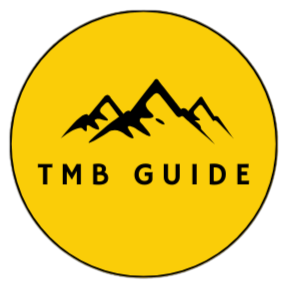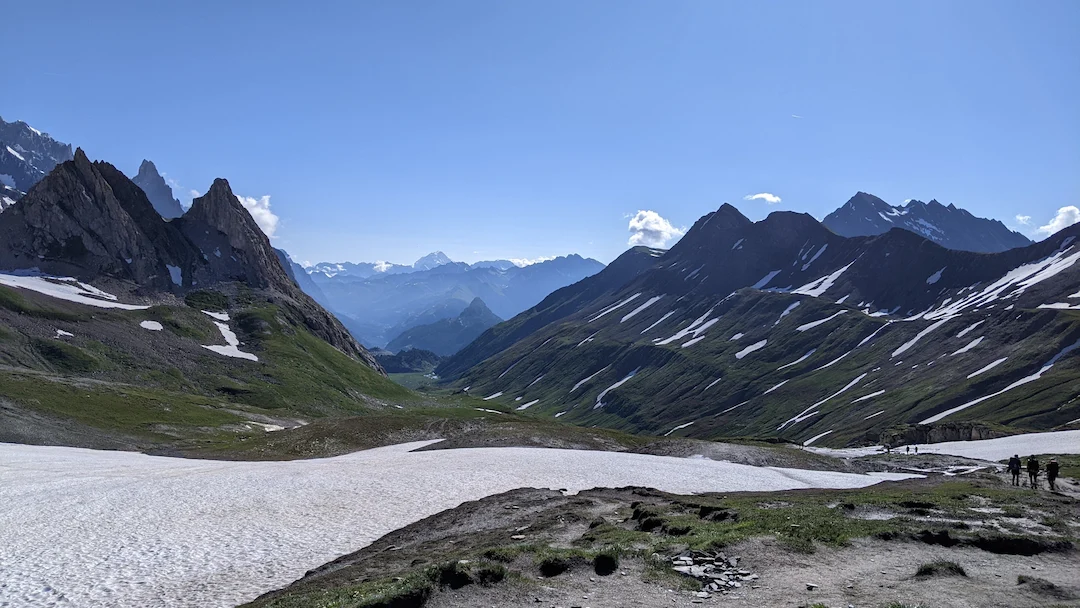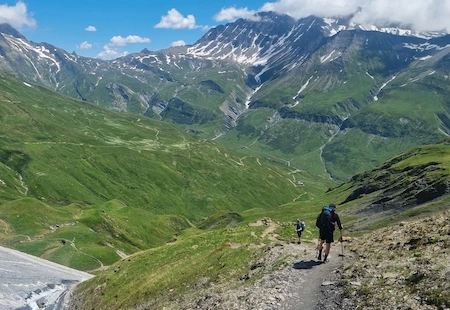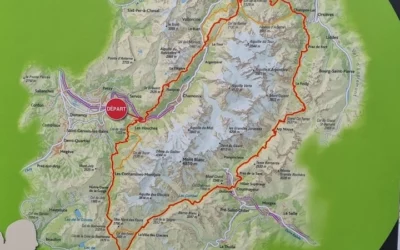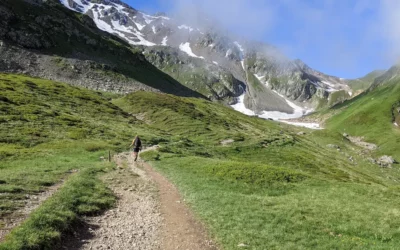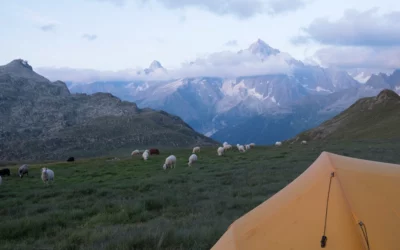The Tour du Mont Blanc is a must-do experience for any hiker, crossing three countries – France, Italy, and Switzerland – and is an adventure to be experienced at least once in a lifetime. The hiking season generally extends from mid-June to mid-September, but the “best” time to undertake this hike depends on several factors, including weather, crowds, and the availability of refuges.
Spring: A Season to Avoid
Spring is generally not the best time for trekking in the Northern Alps. Snow is still very present on the mountain trails and can even fall until June. Moreover, the mountain refuges are still closed during this season. However, spring is a time when nature awakens and the days get longer, offering other possibilities to discover the Mont Blanc region.
Despite its undeniable charm, spring presents particular challenges for hikers. Trails can be slippery and dangerous, and weather conditions can change rapidly. However, for those willing to brave these challenges, spring offers a chance to see the Northern Alps in a different light, with constantly evolving landscapes and wildlife beginning to emerge from winter hibernation.
Summer: The Ideal Season for the Tour du Mont Blanc
When asked “When to do the Tour du Mont Blanc?”, summer is often considered the best season. However, the experience can vary depending on the start date. Here are some points to consider:
- From June 15: Mountain refuges open their doors and daylight duration is at its maximum. Temperatures are mild and the flowering is at its peak, offering colorful landscapes.
Early summer is a time of renewal in the Alps. The mountains, covered in snow during winter, begin to unveil green and flowered landscapes. It is also when local wildlife is most active, offering hikers the chance to observe many animals in their natural habitat.
- From mid-July to mid-August: This is the preferred period for hikers. Trails are clear, days are warm, refuges are open, and there is a lively atmosphere in the villages and refuges.
Mid-summer is the most popular time for the Tour du Mont Blanc, with ideal hiking conditions, pleasant temperatures, and well-maintained trails. It’s also when villages and refuges are most lively, offering hikers many opportunities to meet other mountain enthusiasts and share experiences.
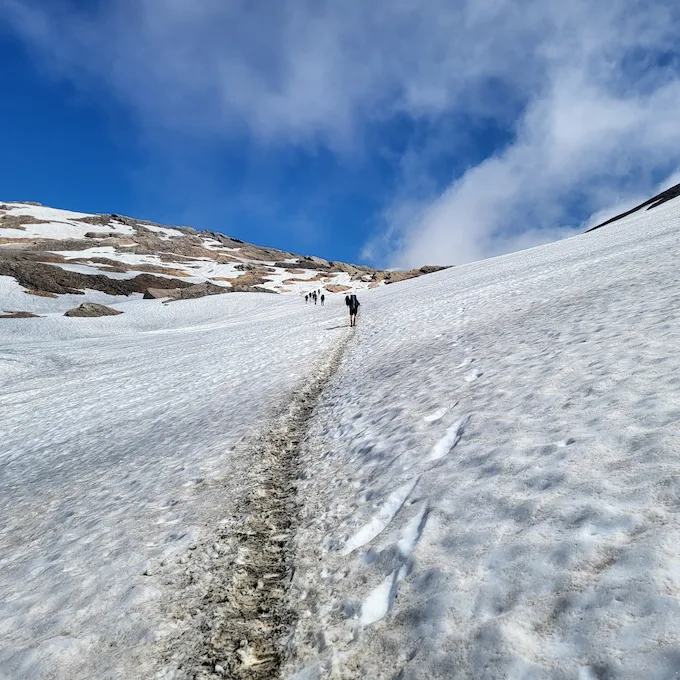
The path to the Col des Fours in early July may still have snow, depending on the seasons and temperatures.
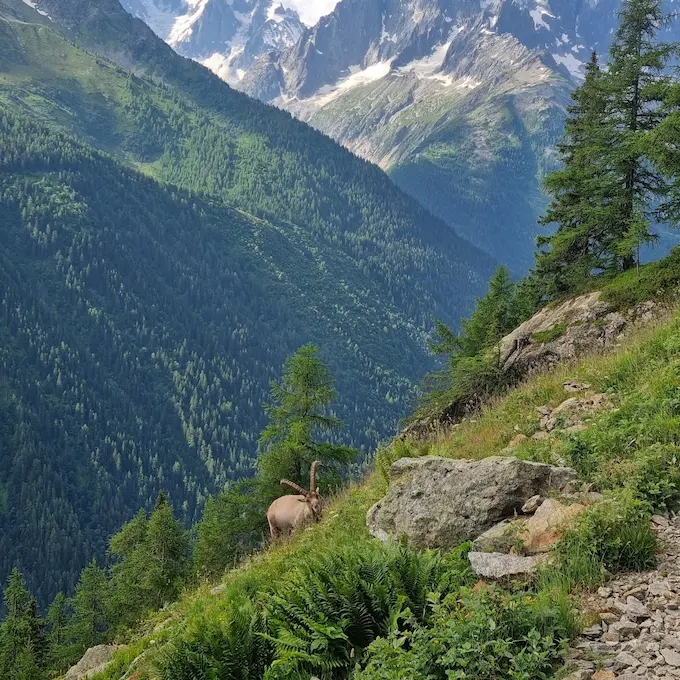
Summer allows for more chances to encounter local wildlife.
- After August 15: The number of hikers decreases on the Tour du Mont Blanc trails, offering a quieter experience. Until mid-September, hiking conditions remain excellent despite shorter days.
Late summer is a transition period in the Alps. Days start to shorten and temperatures begin to drop, but hiking conditions are generally good. It’s also a quieter time on the trails, which can be an advantage for those who prefer a more peaceful hiking experience.
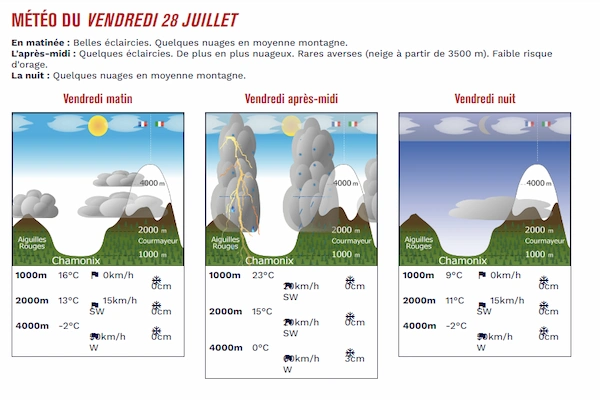
To be sure, check the weather directly on the websites of the resorts and refuges. For example, at: https://www.chamonix.com/meteo
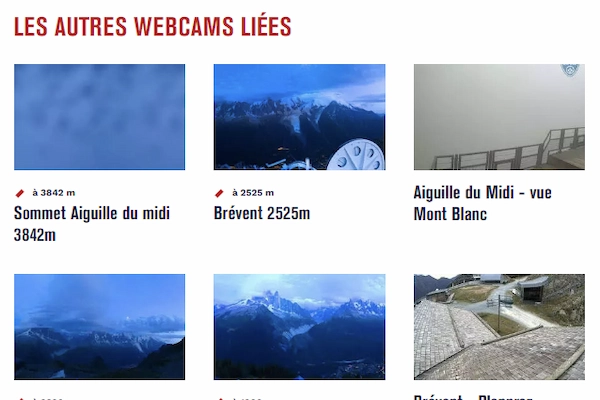
Also check directly on the webcams, those of the Chamonix station and its surroundings are available here: https://www.chamonix.com/webcams
Autumn: An Option to Consider
It is quite possible to do the Tour du Mont Blanc in autumn, specifically between September and late October. Beyond this, the days become too cold and too short without special equipment.
Autumn is a season of contrasts in the Alps. The landscapes are adorned with bright colors, with leaves turning from green to red and orange. Temperatures are cooler, which can make hiking more enjoyable for some. It is also a time when wildlife prepares for winter, offering unique opportunities for animal observation.
Winter: An Adventure for the More Experienced
Doing the Tour du Mont Blanc in winter is possible, but requires great mountain experience and alpine techniques. Conditions are radically different from those in summer and present unique challenges.
Winter transforms the Alps into a landscape of snow and ice. Hiking trails are often covered in snow, and weather conditions can be challenging. However, for those who are well-prepared and experienced, winter offers a unique perspective on the Tour du Mont Blanc. The snowy landscapes are breathtakingly beautiful, and the atmosphere is incomparably calm and tranquil.
Taking Local Events into Account
It is also important to consider specific events taking place in the region, such as the Ultra Tour du Mont Blanc at the end of August, which can affect the availability of refuges and the number of people on the trail.
Local events can add an extra dimension to your Tour du Mont Blanc experience. Whether it’s a trail race, a cultural festival, or a traditional celebration, these events offer a unique opportunity to experience local culture and meet people from the region. However, they can also affect the availability of accommodations and the number of people on the trails, so it is important to consider them when planning your hike.
The Ultra Tour du Mont Blanc, for example, is one of the region’s most important events. This internationally renowned trail race attracts thousands of runners and spectators each year. If you plan to do the Tour du Mont Blanc at the end of August, you may need to adjust your itinerary or book your accommodations well in advance to avoid the crowds.
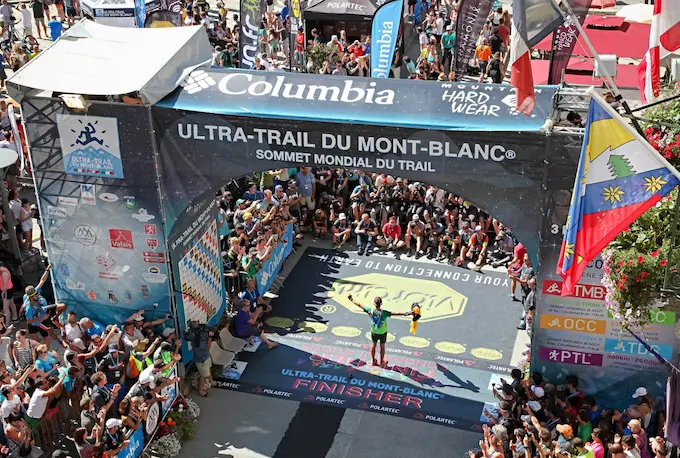
Discovering the Mont Blanc Region Differently
The Tour du Mont Blanc is not the only way to discover the region. Depending on the season, many other activities allow you to explore the Mont Blanc region, such as day hikes, snowshoeing, ski touring, or excursions to the surrounding villages to discover local culture and gastronomy.
The Mont Blanc region has a lot to offer, whether you are a passionate hiker or simply a lover of nature. Day hikes are an excellent option for those who prefer shorter excursions or wish to explore specific areas. Snowshoeing and ski touring are popular winter activities, offering a different way to discover the snowy landscapes.
The surrounding villages also offer a wealth of cultural and gastronomic discoveries. Whether it’s to taste local specialties, visit museums, or participate in festivals, these excursions offer a welcome break after several days of hiking.
